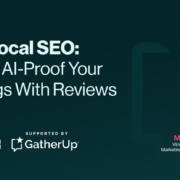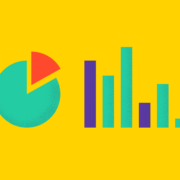Passionate in Marketing in Conversation with Abhijeet Modi, Founder, Beyond Words Writing – Passionate In Marketing
26th June 2025: Artificial Intelligence is reshaping how content is ideated, created, and distributed. What began as a tool for automating basic tasks has now matured into a powerful partner for writers, marketers, and creative professionals. With the growing demand for high-quality, engaging content across platforms, the rise of AI in storytelling is both a timely development and a necessary evolution. However, the future of content does not rest in machines alone. It lies in the synergy between human creativity and machine efficiency.
Understanding the AI Content Boom
The recent surge in AI-generated content can be traced back to advances in natural language processing and machine learning. Tools like ChatGPT, Jasper, Claude, and other platforms are now capable of generating full-length articles, social media posts, product descriptions, and ad scripts. These tools can analyze massive data sets, identify trending topics, and produce content in seconds. The growth in AI-generated material has been driven by a need for speed and volume in digital marketing. Businesses are competing for attention across multiple platforms, and AI provides the ability to meet those demands. However, this increase in volume has sparked debates around quality, originality, and the authenticity of AI-produced content.
Why AI Alone Is Not Enough
AI tools are exceptional at analyzing data, spotting patterns, and generating grammatically correct content. But they often lack emotional intelligence and contextual awareness. These are essential elements in effective brand storytelling. Storytelling involves more than correct sentence structure or keyword usage. It requires a human understanding of tone, cultural relevance, and audience emotion. A machine can summarize facts or write a product description. But it cannot fully grasp the subtlety of humor, the depth of empathy, or the cultural nuance that makes a story stick. When stories are entirely AI-generated, they may feel generic, impersonal, or out of touch. These shortcomings highlight the need for human input to create content that truly connects with readers.
The Role of Humans in AI-Assisted Storytelling
Humans bring an irreplaceable layer of creativity, emotional depth, and ethical awareness to content creation. They understand narrative pacing, character development, and how to create suspense or evoke empathy. These are skills that AI lacks, even as it becomes more advanced.
In a collaborative content environment, humans act as strategists, editors, and quality controllers. They decide what story needs to be told, define the voice of the brand, and edit AI drafts for nuance and tone. This kind of partnership enables content teams to work more efficiently while still producing material that is emotionally engaging and strategically sound.
By guiding AI tools with strong prompts and refining outputs through editing, human creators maintain control over narrative direction and ensure alignment with brand values.
Personalization at Scale with a Human Touch
One of the most significant advantages of AI in content is its ability to personalize messaging at scale. AI can process user behavior, location data, browsing history, and more to generate targeted messages for specific segments. This allows brands to tailor content for different audiences with a level of efficiency that is impossible to achieve manually. Despite these strengths, AI alone cannot determine the emotional appropriateness of a message. It may deliver a perfectly timed product recommendation, but without sensitivity to the customer’s mindset, it risks coming across as cold or irrelevant. That is why human input is critical. Humans shape the tone, pace, and narrative so that messages feel warm, genuine, and respectful.
When human storytelling instincts are combined with AI’s ability to personalize, the result is content that resonates deeply while still being scalable.
Real-World Creative Models Evolving with AI
Across industries, content creation is shifting toward collaborative workflows that blend AI tools with experienced professionals. Editorial agencies and independent writing firms are adapting to this change by embedding AI into their internal processes while preserving human-led storytelling as the foundation.
One example of this evolving approach is seen at Beyond Words Writing, a professional writing service that has embraced AI as a support tool while continuing to prioritize human intuition and creativity. Rather than fully automating content, they use AI to accelerate research, outline generation, and consistency checks. However, every final piece of content is shaped by writers and editors who understand the client’s voice and audience.
This model reflects the broader industry shift. The future of storytelling lies not in replacing human writers, but in empowering them with tools that expand what is possible.
Creative Efficiency Without Losing the Soul
AI allows teams to move faster. It can help brainstorm topic ideas, draft content outlines, optimize SEO keywords, and even write initial drafts. This frees up creative professionals to focus on storytelling, design, and strategic thinking. The result is more content produced in less time, without necessarily increasing workload. However, faster production should not mean lower quality. AI-generated content still requires human review to ensure it is engaging, factually accurate, and consistent with brand messaging. Writers and editors remain essential in evaluating whether the content reflects the values and goals of the organization.
With human-AI collaboration, brands can avoid burnout while still maintaining creative integrity. This is especially important as content demands continue to grow across video, blogs, social media, and emerging platforms.
Ethical Storytelling and Brand Responsibility
As AI becomes more embedded in content strategies, ethical concerns have come to the surface. Questions around plagiarism, misinformation, and data privacy are growing. If left unchecked, AI could unintentionally produce biased, inaccurate, or insensitive content. This puts a brand’s reputation at risk. Human intervention helps ensure that ethical standards are upheld. Editors can verify facts, apply cultural sensitivity, and assess whether the AI-generated material meets legal and industry guidelines. Furthermore, businesses need to be transparent about how content is created. If AI tools are involved in the process, this should be clearly disclosed to maintain customer trust.
Ethical storytelling is not only about avoiding mistakes. It is about building a brand that values honesty, inclusivity, and responsibility. These values cannot be automated. They must be upheld by the people behind the stories.
Emotional Connection as a Competitive Advantage
In a world flooded with content, emotional resonance is what sets great storytelling apart. People remember stories that made them feel something. Whether it is humor, inspiration, empathy, or excitement, emotional response drives engagement and loyalty. AI can mimic tone but it cannot feel emotion. It does not understand irony, personal history, or social context in the way humans do. Emotional intelligence is what allows human writers to understand what their audience is going through, what matters to them, and how best to speak to those experiences.
By collaborating with AI, writers can use data to guide their narratives but still rely on human intuition to inject meaning and warmth. This emotional layer is what transforms functional content into memorable storytelling.
Teaching AI the Brand Voice
AI tools work best when they are trained on a specific dataset. This includes past blogs, social media posts, and internal communications. By feeding these materials into the system, brands can teach AI to replicate their tone and vocabulary. However, even a well-trained model needs ongoing human direction. Writers and content strategists must continually fine-tune AI-generated outputs to maintain voice consistency. They ensure that the tone remains appropriate for different formats and audiences. They also watch for subtle shifts in brand identity that require updating the training data.
Maintaining brand voice is not a one-time task. It is an ongoing process that requires active human participation. AI can help reinforce that voice, but it cannot define it on its own.
Scaling Content for Multichannel Ecosystems
Modern marketing is omnichannel. Content must be adapted for websites, social media, email newsletters, podcasts, and more. Each platform has its own format, audience expectation, and algorithmic preference. Meeting these demands requires agility. AI helps streamline the repurposing process. A single blog can be transformed into social media captions, email intros, or video scripts with the help of generative tools. This allows brands to maintain a consistent message across platforms without duplicating effort.
However, not every channel is the same. What works on Instagram may not work on LinkedIn. Human editors adapt AI-generated content to fit platform-specific norms while ensuring that it still resonates with the target audience. This collaborative process is what makes multichannel marketing effective, efficient, and emotionally engaging.
Preparing for the Future of Storytelling
Looking ahead, the content industry will continue to evolve. AI will become more advanced, voice assistants more prevalent, and interactive content more immersive. Brands that want to stay ahead must invest in both technology and human talent. Creative teams will include writers, designers, data analysts, and AI prompt specialists. They will work together to produce content that is both data-driven and emotionally powerful. This is not about replacing humans with machines. It is about enhancing human potential through collaboration.
The brands that thrive will be those that treat AI as a creative partner rather than a shortcut. They will use it to improve workflow, increase personalization, and expand storytelling possibilities, without sacrificing authenticity or ethical standards.
Conclusion
The AI content boom is not the end of human creativity. It is a new beginning. It invites marketers, writers, and brands to reimagine the way stories are created, shared, and remembered. When used wisely, AI becomes more than a tool. It becomes a co-author. The future of brand storytelling is not artificial. It is collaborative. It is powered by both data and emotion, technology and imagination. Human-AI collaboration will not just be a useful option. It will become the new standard in content creation.
By embracing this partnership, brands can scale smarter, connect deeper, and tell better stories than ever before.
Log in to leave a comment
Passionate in Marketing is promoted by i-miRa Knowledge Solutions, a company founded in 2010 to foster various business units dedicated to creating, disseminating, and managing knowledge-based products, services, and solutions. These offerings cater to corporate entities, startups, and academic institutions alike.
Contact us: [email protected]
© 2025| Passionate In Marketing |All Rights Reserved | Privacy Policy












